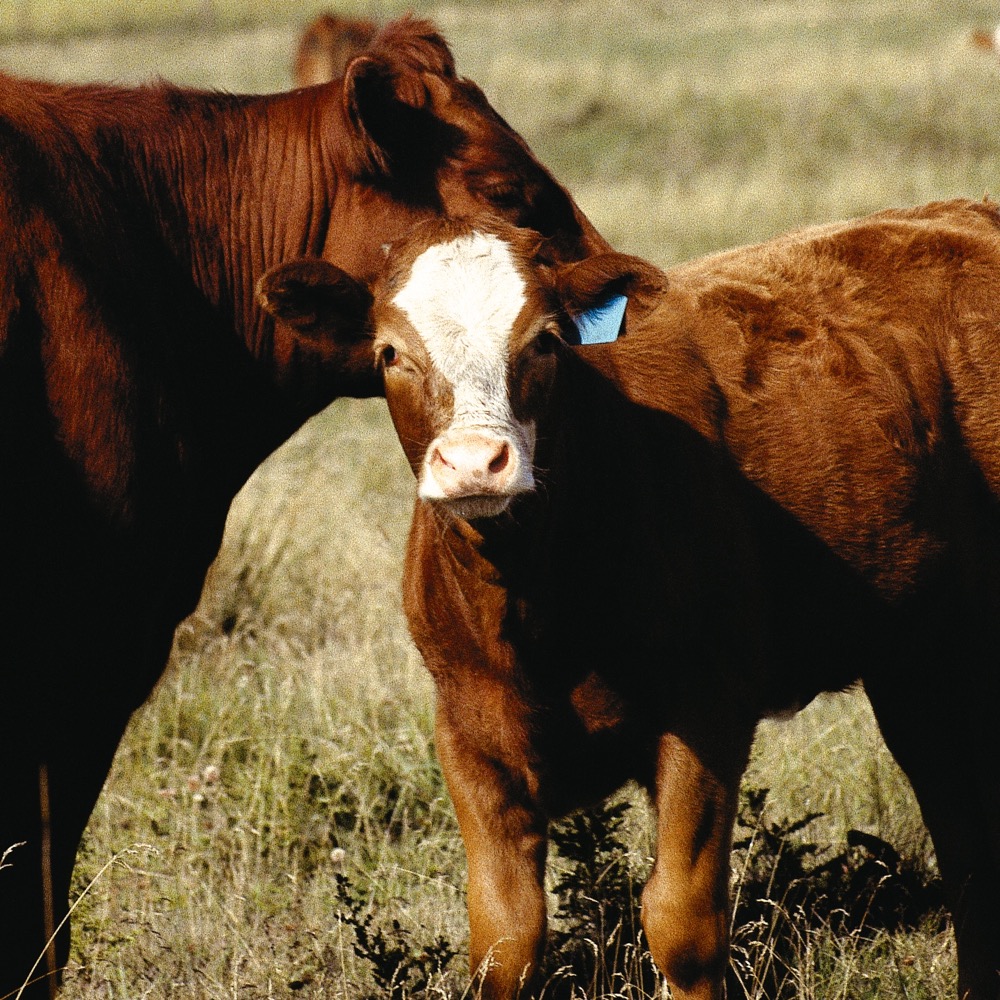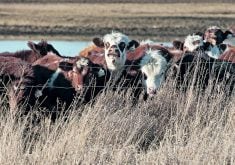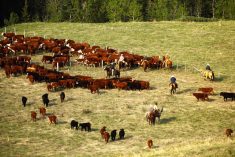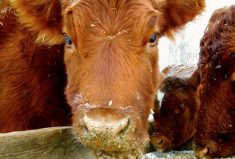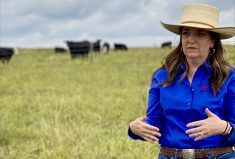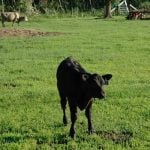Pregnancy checking cows in the fall could save producers up to $250 a head in winter feeding costs — but is it really worth it?

“Over the last 10 years, it really hasn’t been,” said Brenna Grant, manager of Canfax Research Services. “But there is a threshold, at about $1.02 per pound. If prices are lower than that, it encourages producers to preg check and cull in the fall.”
Cow prices in the later part of September were sitting around $1 per pound, Grant said during a Beef Cattle Research Council webinar late last month.
“That means we’re right on that threshold of where it makes sense for producers to take a really hard look at their own costs to determine what’s going to make sense on their own operation,” said Grant.
“We have seen prices peak in 2015, and we’re actually seeing prices coming down. So does preg checking now actually become economically viable?”
Read Also
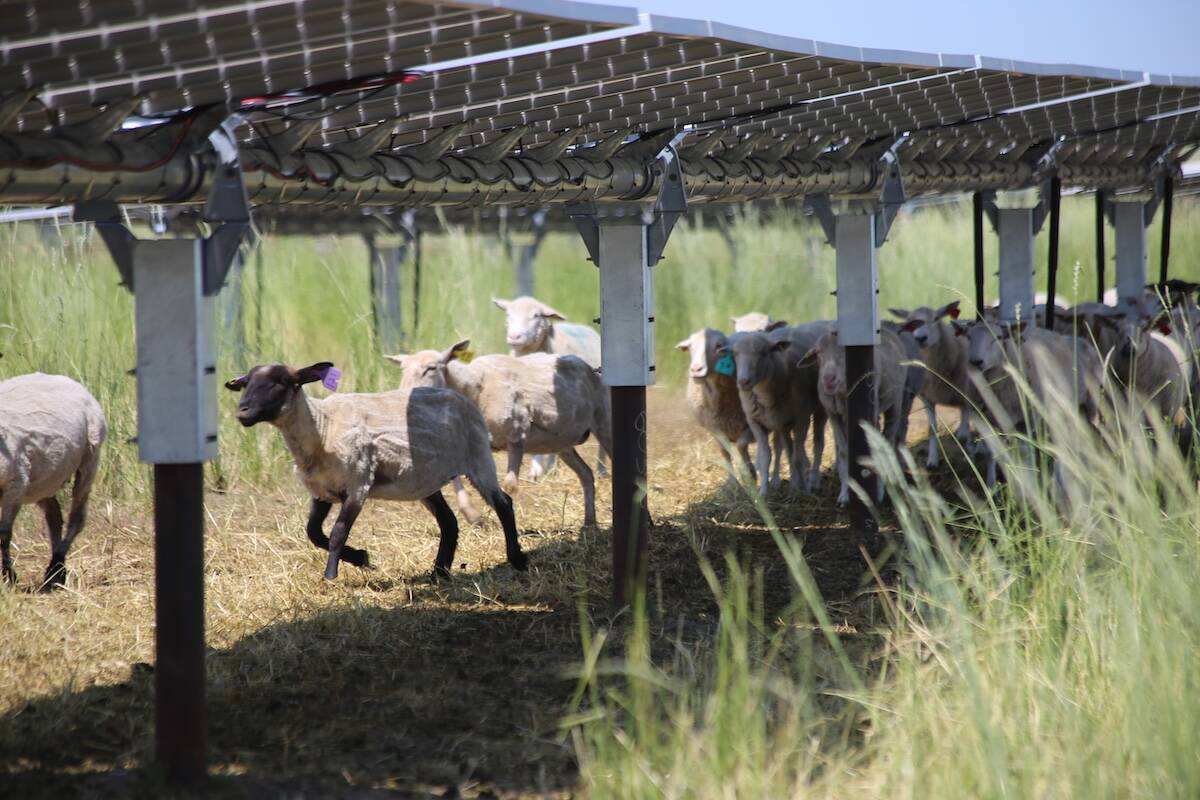
Solar and sheep provide valuable farm diversification
Agrivoltaics – the system of grazing sheep or conducting other agricultural activity under arrays of solar panels – can provide farmers with diversification options for their operations.
Despite the cost of overwintering open cows, the 2015 Western Canadian Cow-Calf Survey showed that only 60 per cent of producers preg check their cows, although that is up from 49 per cent from the 1998 survey.
The higher price of cows each spring has “really discouraged preg checking over the last 10 years,” said Grant. “The price of cows is a really big determinant of what you’re going to do.
“Producers in Western Canada who have been overwintering their cows have received, on average, prices 25 per cent higher in the spring than the previous fall, so producers have really not benefited from preg checking with these increases.”
Because cull cows make up between 15 to 30 per cent of a cow-calf producer’s income, conventional wisdom is that open cows should be preg checked and then sold to avoid winter feeding costs, said Grant.
“The management of cull cows is not an insignificant aspect of a producer’s income,” she said.
“But the value of a cow in a cow-calf producer’s operation is dependent on a number of parameters… including his type of winter feeding management and the length of the feeding period.
“The economics of preg checking are really dependent on the cull cow market price, but also the winter management system.”
The type of winter feeding system impacts not only yardage and feed costs, but also the average daily gain of the animals, she added.
“That’s going to play a role on how much of an advantage or disadvantage you have keeping those cows over the winter.”
Running the numbers
The average cost of production varies from around $1 to $1.80 per day, depending on the winter feeding management system used.
“Over a 160-day feeding period, producers can save anywhere between $155 and $240 per open cow identified and culled. Obviously, producers who feed longer, say 180 days, are going to have larger gains,” said Grant.
The cost of feed accounts for around 60 per cent of a producer’s total winter feeding costs, she said.
“The higher a producer’s feed and overwinter costs, the more favourable preg checking and culling cows in the fall is.”
But cow performance can offset that, she added.
“You may have low feed costs, which makes it look like it would be attractive to feed and sell in the spring, but if your average daily gain is minimal, that offsets some of the advantage.”
Those numbers vary based on the type of winter feeding system used. In a drylot mixed hay system, the average cost of production is around $1.78 per cow per day. To break even, the cows need an average daily gain of around 1.2 pounds per day, but cows generally see an average daily gain of 1.44 pounds on that system, which “really favours selling in the spring.”
A swathed barley grazing system has an average cost of production of $1.22 per cow per day, with a break-even of 0.7 pound average daily gain per day and an actual average daily gain of around 0.58 pound.
“In that system, you actually have a lower average daily gain, so this means it really favours preg checking and selling in the fall,” said Grant.
Bale grazing, on the other hand, has a cost of production of 98 cents per cow per day, so to break even, cows only need around 0.5 pound average daily gain per day.
“In bale grazing, even though it’s your lowest cost of production at less than $1 a day and it has a very low break-even average daily gain as a result, you can actually have quite good average daily gains of about 0.88, and that again encourages selling in the spring,” she said.
Ultimately, your decision will rest on the goal of your winter feeding system, said Grant.
“Is it to actually add pounds, or is it simply to maintain those cows? If your goal is simply to maintain them, you’re not looking for these average daily gains and selling in the fall may be what’s best for your operation.”
A calculator for determining the economics of preg checking on your operation can be found at beefresearch.ca.

